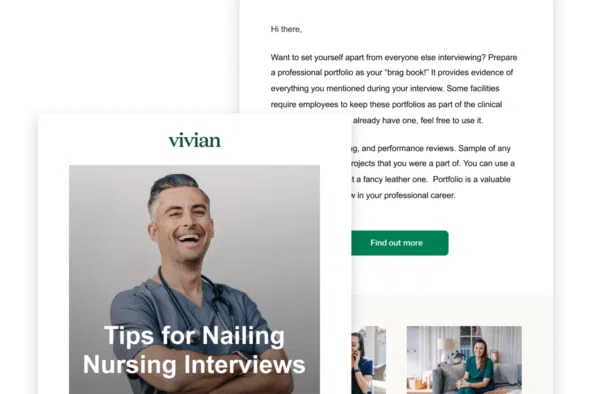The LGBTQ+ (Lesbian, Gay, Bisexual, Transgender, Queer, Intersex, Asexual, plus) community reportedly makes up 15% of the world’s population. However, this number is most likely vastly underreported, and LGBTQ+ people likely make up a much more significant segment of the world’s population. You probably have LGBTQ+ family, friends, acquaintances, co-workers, baristas and, of course, patients.
LGBTQ+ people often face deliberate health care discrimination that can range from harassment and humiliation by providers, lack of appropriate gender-affirming care and sometimes even being turned away entirely.
Nurses are uniquely positioned, between the patient and the provider, to improve the experience in healthcare for LGBTQ+ patients and substantially improve their health outcomes.
5 Tips to Improve Healthcare for LGBTQ+ Patients
It’s important to address these issues so that patients in LGBTQ+ communities are safe. Giving better, more thoughtful care can actually save lives. So, how do we combat the challenges that our LGBTQ+ patients face in healthcare?
Some of this advice may not feel like something you—as a clinician—have full control over, but that’s okay. You take the time to educate those around you and advocate actionable suggestions to your leadership.
1. Ask Leadership to Update Intake Forms
Whether you work in a hospital or an outpatient clinic, patients often have to fill out intake or admissions paperwork. Until recently, many EHRs (electronic health records) only showed two gender options—male and female. This does not match with what we know about gender. Some of your LGBTQ+ patients may have gender dysphoria, which includes feelings of discomfort and a sense of unease because of a mismatch between the gender you were given at birth and the gender with which you identify. Incorrect labeling upon intake can compound those feelings.
Having intake forms that have other options, including non-binary, other, or prefer not to answer, can be a game-changer for patients in the healthcare setting.
2. Advocate to Have Nondiscrimination and Diversity Policies Visibly Displayed
Have your policies prominently posted about nondiscrimination in the waiting rooms of hospitals and doctor’s offices. Let your patients know as soon as they walk in that the staff is welcoming and accepting of all genders and sexual orientations, so they can feel more comfortable. Display your policies and procedures or have a patient sign them in their admission paperwork. Posting the policies is only half the battle. Make sure all of your peers know that actions speak louder than words, and remind them to treat LGBTQ+ patients with the same care and thoughtfulness that you would treat anyone.
3. Train and Re-Train Staff
All healthcare staff, including front desk workers, patient transporters and everyone in between, should be given training regarding care for LGBTQ+ patients. This training should include the definitions for things like gender and orientation, the differences between them and what all the letters in LGBTQIA stand for. For those in direct patient care, more intense training should be given on how to interact with the utmost respect and how to complete health screenings based on biological gender in a sensitive and caring manner. There are continuing education programs based on LGBTQ+ care that you can take on your own to improve your practice.
4. Practice Gender Affirming Care in Your Personal Patient Interactions
Many of these recommendations can be done alone, but they should also be incorporated into organizational practice as a whole. How do you improve your own practice during your everyday interactions on the floor with patients? Here are a few specific tips on changing your personal interactions with LGBTQ+ patients:
- Do not make assumptions regarding sexual orientation or gender identity
Until your patient tells you their gender, do not assume. People may represent themselves one way but identify as something else. So, it’s important not to assume up front that you know or can tell someone’s gender by looking at them. They would much rather you ask things like “what gender do you identify as?” than assume incorrectly and misgender them, which can contribute to gender dysphoria. You should also encourage your staff to take implicit bias training. - Ask broad and open-ended questions
Specific or binary questions like “when was your last pap smear?” can really contribute to misgendering your patient. This question implies someone is a woman, identifies as a woman, and has a cervix, which you cannot assume. Instead, ask things more like “what screenings have you had recently?” or “have you had any cancer screenings recently?” which can apply to any gender and any biological gender organs. - Mirror pronouns and names the patient uses
Listen to what your patient calls themselves, or what their family members or other loved ones call them. But remember, your patient themselves will know their identity and preferred pronouns and names best. Sometimes families are not the best source. You can always ask for clarification. If you notice your patient is referring to themselves as a different gender than what’s in their chart, make a note of that.
5. Ask about Anatomy After Gender Identity
Once you have confirmed the identity and you are using the right pronouns and name, you can then delicately move on to anatomy (as appropriate for the scope of the appointment). Patients want to take care of themselves and will be much more comfortable discussing their bodies with you when you’ve expressed such respect and care for their identity. Steer clear from assuming anything about your patients. You can always ask and make it very clear. Making it more black/white and scientific is easier for patients than you skirting the question and being awkward. Be direct with questions like “Do you have a cervix?” and continue using the right pronouns so that you can show them you are still listening and respecting them.
Make Changes One Step at A Time
Not all healthcare providers can become experts, but these simple changes and other easy training can make a huge difference in your patients’ health and lives. Your role as a healthcare provider puts you in a unique position to understand differences, identify needs and advocate for equality for all patients, so everyone has a better experience while seeking care.






I’m looking for Cna nursing assistant travel contact job thanks
Vivian currently has several postings for CNA travel jobs and permanent positions, as well. Please browse our job listings at http://www.vivian.com/browse-jobs/landing and select CNA in the “All disciplines & specialties” drop down menu, then click the “See Results” button. Thanks for reaching out and best of luck!